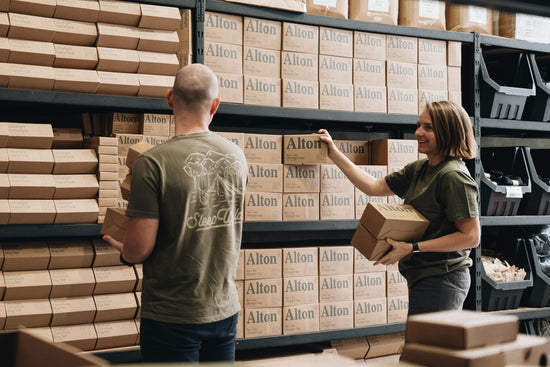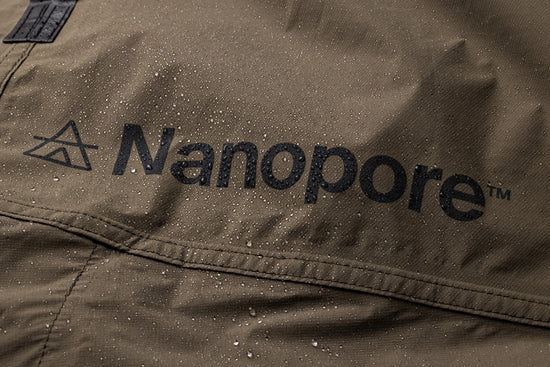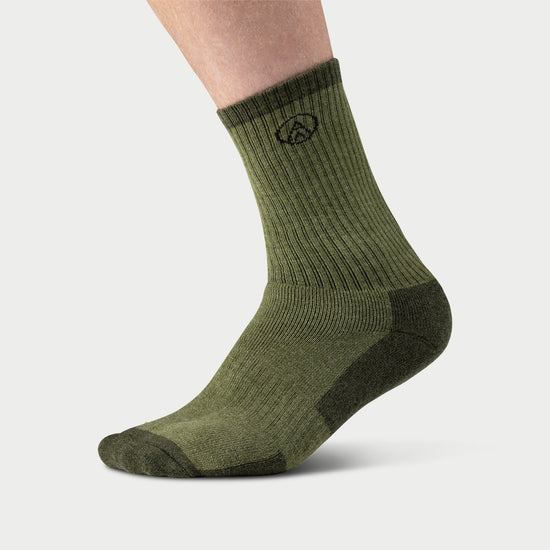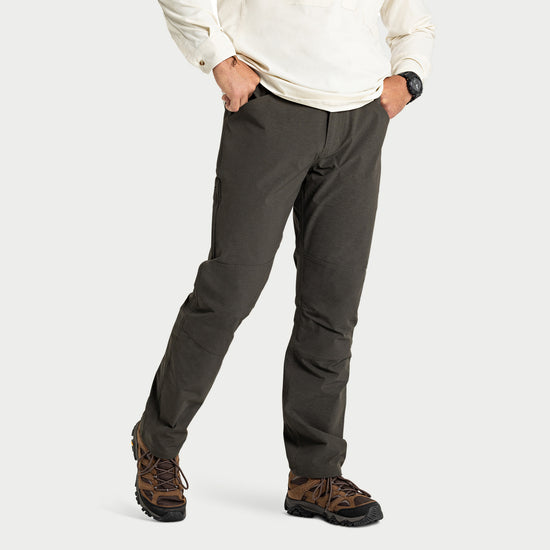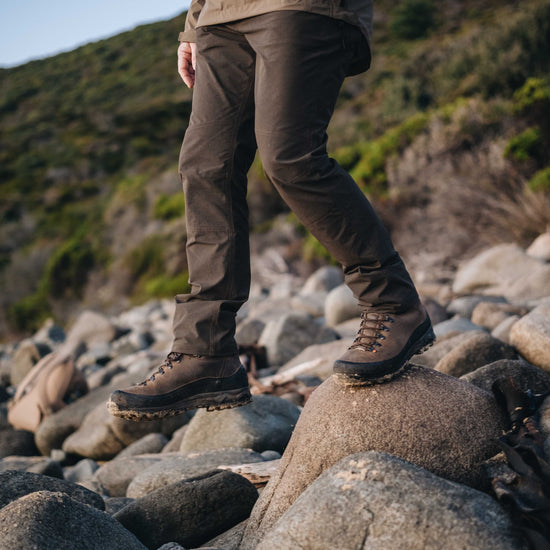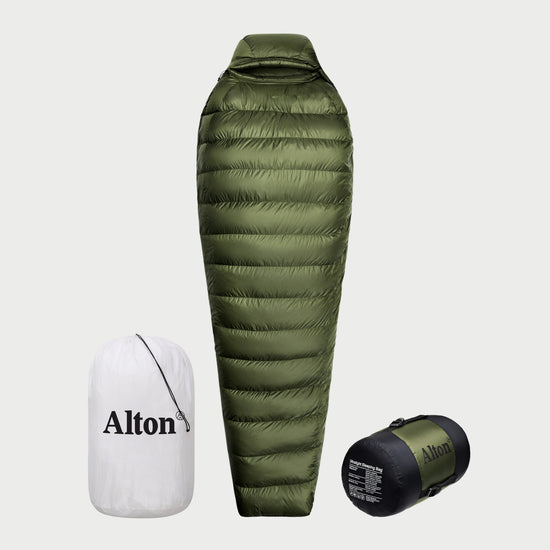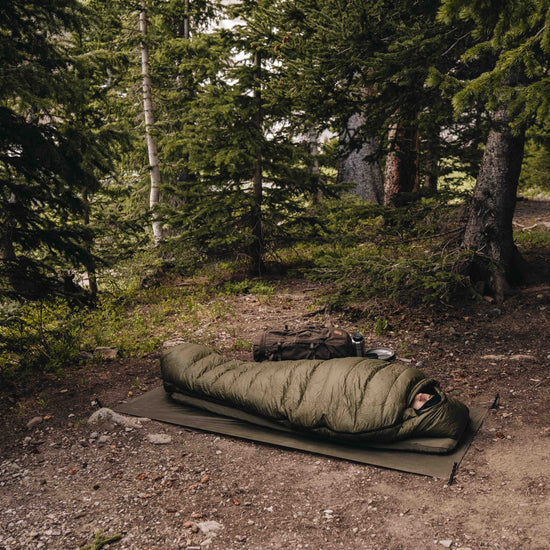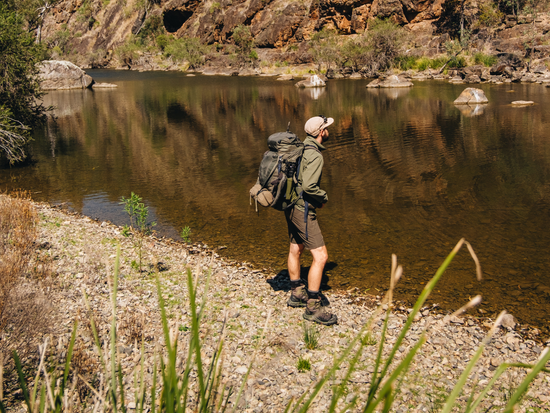Winter camping has a lot going for it. The campsites aren’t as crowded, there are less pesky insects to annoy you, and the scenery can be next-level stunning.
But it's just so darn cold out there!
Look, we get it. Being cold sucks. Just recently the Alton team set out for a trip to Mount Hotham in the Victorian Alps, and boy-oh-boy was it cold!
As we huddled in our sleeping bags inside a hut high in the mountains, we swapped stories about all the times we’ve been caught off guard in chilly conditions. Let’s just say being cold definitely makes an adventure memorable… for all the wrong reasons.
But along the way we have learnt a whole lot about how to stay warm (even if Hotham got the better of us this time).
So in today’s blog, we’ll be sharing our top tips for staying warm camping in winter – and all year round!
A quick note about safety.
Being prepared is an important part of any adventure, but it is worth taking extra precautions for winter camping when temperatures may drop below freezing. Being ill-equipped and underprepared in winter conditions can have dangerous, even life-threatening, consequences.
So please, don't try to be a hero. Prepare meticulously, pack for the worst, and choose activities that are appropriate for your skill level. And remember, there's no shame in turning back early if conditions change.
Because winter camping is cool, but making it home safely is even cooler.

Tip #1: Know what you’re getting into.
We all know the saying, “If you fail to plan, you plan to fail”.
So the very first thing you do when planning a winter camping trip is, well, plan it!
Set aside time to thoroughly research your trip before committing to anything. The goal here is not necessarily to have a day-by-day itinerary (although that may be advisable for certain activities), but to really understand what you’re getting into.
That means getting familiar with the terrain, difficulty, and required skills for your intended adventure. Then start to get more specific; consider the route, and how different conditions might impact your plans.
For activities like hiking, bikepacking and offroading, you can often find detailed track notes online. If you’re going to be in a National Park, we recommend calling the office to ask about the condition of the track and seasonal weather forecasts for the area.

Tip #2: Keep a close eye on the weather.
The weather is notoriously unpredictable in the wilderness, not just in winter but all year around. Conditions can change fast and frequently. And the higher into the mountains you go, the more extreme it gets. Case in point, Mount Hotham occasionally has white-out snowstorms… in the middle of summer.
All of this uncertainty can make it hard to know what weather conditions you’ll get when you’re planning for a winter camping trip.
But that’s not a reason to ignore the forecasts. It’s a reason to pay even more attention to them.
Researching average temperatures, precipitation patterns, and historical data for the area will help you pack for the worst-case scenario and know how to adapt your plans if conditions change.
For our adventure on Mount Hotham, we reviewed the historical climate data prior to the trip and closely monitored the weather forecast before and during the trip.

Tip #3: Layers on layers on layers.
You’ve probably heard it a hundred times, ‘wear layers when you’re hiking!’. But for camping in the cold it is essential to understand how to layer up for maximum warmth.
The basic principle of layering is to combine a base layer, mid layer and outer layer of clothing to create a clothing system that functions in a wide range of scenarios.
The base layer wicks sweat away from your body and keeps you dry, the mid layer is all about insulation, and the outer layer is there to protect you from rain, wind and inclement weather.
Here’s what layers of the team brought for our winter camping trip to Mount Hotham:
Base Layer
Sam: For harsh, alpine conditions I prefer thermals made from a merino-polypro blend. They’re faster-drying and more durable than pure merino.
Christie: I wore a polypropylene thermal top and leggings. Nothing fancy but they did the job!
Harrison: Midweight merino thermals are my go-to for snowy conditions. They’re warm, but breathable and quick-drying, perfect for activities like hiking or skiing where you work up a sweat.
Mid Layer
Sam: For this trip I used a warm fleece and the new Alton Down Puffer Jacket (shh, coming soon). For my legs, I wore the Switchback Pants over my thermals.
Christie: I wore a lightweight synthetic top over my thermals, a puffer vest over that and one an Alton Puffer Jacket (shh, also coming soon) over top. But I definitely would pack an extra fleece, next time!
Harrison: My mid-layer combo for Hotham was a warm fleece and down jacket.
Outer Layer
Sam: My outer layer was the Alton All-Weather Anorak. It’s waterproof and super breathable, which prevents that clammy feeling from condensation build-up as you move and sweat.
Christie: Yep, same for me! All-Weather Anorak all the way!
Harrison: I switched it up between the Alton Anorak and another waterproof shell jacket.
There isn't one size fits all when it comes to layering, so you should tailor the specific combination of layers to suit your needs.

Tip #4: Pack multiple pairs of gloves!
We went to Hotham hoping for snow… and we got some. But we also got rain. Lots of rain. And hail. And extreme wind. Yep, it was a real treat!
While we all had packed our snow gloves, the heavy rain eventually soaked through. And guess what? Wet gloves aren’t very helpful in freezing conditions.
Here’s what Christie had to say about this experience:
“I only bought one pair of gloves and they got soaked on the first day. My hands were cooked after only a few hours. They were so cold and sore that I could barely hold any gear. Lesson learnt - bring multiple pairs of gloves!”
Our advice? Just like you should layer up your hiking clothing to feel warmer while camping, layer up your gloves to suit the conditions. For wet, snowy weather like we experienced at Hotham, we’d recommend using a thin liner glove as your base layer, a thick insulated mitten or glove over that, and then a waterproof mit over top to act as the outer shell.

Tip #5: And don’t forget extra socks, too.
Keeping your feet warm (and dry) while camping in winter can be a real challenge – especially if it’s freezing cold and wet, like it was for our recent trip to Mount Hotham.
So how do you keep your feet warm when winter camping?
Well, appropriate footwear such as sturdy, waterproof hiking boots are a good place to start. Sneakers might suffice for hiking in mild, dry conditions on easy, well made tracks… but for tougher terrain and winter conditions, not having the right footwear can be a serious liability.
As well as wearing the right shoes, you are definitely going to want some warm, breathable hiking socks like our Midweight Merino – and a few pairs to spare. Because of how wet and slushy it was at Hotham, we were constantly changing our socks out for dry ones. Gaiters, boot liners and even waterproof socks are other methods to consider that can all help keep your feet warm and dry when camping in winter.
Whatever methods you go for, don’t forget to keep a pair of warm, dry socks in reserve to change into when you make camp for the day!

Tip #6: Protect ya neck.. And your head.
Your head and neck make up a surprisingly large surface area of skin, which is why leaving them exposed in cold conditions can cause you to lose a lot of heat, even if the rest of your body is rugged up to the max.
A beanie and a buff are a great place to start, but if it’s really freezing out there then you might want to consider wearing a balaclava as well. The colder it is, the more important it will be to cover up as much skin as possible, including your face.
Tip #7: Don’t sweat it.
Seriously. Sweat is not your friend when you’re winter camping.
Sweat is your body’s way of cooling you down during exertion. As the moisture evaporates from your skin, it takes the heat with it. As the sweat is wicked into your clothes, making them damp and thermally conductive so they literally pull the heat away from your skin, making you feel cooler.
This is great when in hot weather. But in cold, freezing conditions? Not so much.
So what can you do about it? Well, it comes back to our last tip for staying warm when winter camping – use your layers!
Your clothing layers are made to take on and off as your body temperature changes. Say you’re out for a hike in the mountains. It’s close to freezing and there’s an icy wind blowing, so you’ve got all your layers on. But soon you start to feel yourself warming up as you move. That’s nice, right? You’re not sweaty yet, but you are comfortably warm. This is your cue to shed those mid layers!
Removing your mid layers at this stage can help stop you from becoming too sweaty and will prevent your mid layers from becoming damp, which will reduce their insulative power when you need it.
Just like you want to remove your warm layers before you get hot and sweaty, you want to put them back on before you feel cold. As soon as you stop moving, your body heat production drops, but in most cases your base layer will still be damp, conducting heat away from your skin. In cold conditions, this can cause your temperature to drop quickly – and once you’ve got a chill, it can be much harder to warm up again.
So to stay warmer during winter camping, remember to take off your mid layers before you get too warm (and sweaty) and put them back on asap when you stop for a rest.

Tip #8: Invest in a vest.
Keeping your core warm is essential for feeling warm when camping in winter. If your core loses heat, your body begins restricting blood flow to your extremities, starting with your hands and feet. If your extremities are feeling chilly, this can be a sign that you actually need to warm up your core body temperature – not just your frosty fingers and toes.
This is where an insulated vest comes in. By keeping your core area warm, you’ll find the rest of your body will feel warmer, too. But there’s more. Because a vest is sleeveless, it is an ideal mid layer for activities where you’re working at a moderate intensity level, such as hiking or biking.
If you use an insulated hiking vest as your "first-on, last-off" mid layer over your base layer, you’ll be able to regulate your body temperature to prevent overheating while still prioritising warmth where it is going to be the most effective: at your core.

Tip #9: Winter-proof your sleep system.
We could write a whole blog about how to winter-proof your sleep system – and maybe we will, one day soon. But for now, we’ll just say that building the best sleeping system for winter camping is all about having the right gear, and layering it up to the best effect.
Your sleeping system is everything you use for sleeping, minus the shelter. For example, our go-to sleep system for Mount Hotham was a sleeping bag and liner, insulated sleeping mattress and closed-cell foam sleeping pad, and an insulated camping pillow.
The important part here is understanding how to use these items together. For cold conditions, you need to ensure that every item in your sleep system has a suitable warmth rating for the lowest temperatures you may encounter – or ideally, even warmer.
That means choosing a sleeping bag with an adequate comfort rating (not the lower limit rating) and a sleeping mattress with a high enough R-value for the conditions. For even more of a boost against the cold, combine your sleeping mattress with a closed-cell foam pad and use a thermal sleeping bag liner.

Tip #10: Pack extra food – a lot of it!
If you've ever been hiking, you'll know how hungry you feel afterwards – and this is even more extreme in the case of winter camping. This is because your body burns more calories as it fights to maintain your core temperature. Plus, winter conditions often make activities like hiking more difficult (think trudging through snow and mud) and involve carrying more weight (all those extra layers and winter gear).
To compensate for this extra calorie burn and keep your energy levels high, you'll need to pack and consume more food than you would in warmer weather. For example, consider combining your dehydrated meals with high-carb add-ons such as rice or pasta and olive oil.
On our trip to Hotham, we made sure to bring lots of extra food and packed a bunch of high-calorie snacks… nuts, muesli bars, and dried berries were the team favourites.
Tip #11: Start slow, stay warm.
You don’t just become a pro at winter camping overnight. It takes time to build up the skills and expertise needed to handle extremely cold or snowy conditions.
If you’re keen to try winter camping, start slow and gradually increase the difficulty of your adventures. This will enable you to test out your gear and get a feel for the conditions in a safer, more controlled environment.
For snow trips, we recommend using a hut or cabin (like we rented at Mount Hotham) as your base camp and going for day trips in the area before you attempt anything more extreme.
Tip #12: Make a safety plan (and tell someone about it).
A safety plan is an important part of planning any outdoor activity, but especially for winter camping.
As a part of your safety plan, you should have a detailed look at the area you’re planning to camp in and locate any potential emergency shelters that you can use if you’re caught in a storm.
If you’re camping in a group, make sure you sit down before your trip and discuss your safety plan together. Find out who, if anyone, has first aid qualifications or other relevant qualifications, and check that you’re all prepared, with the right gear and enough food. We suggest carrying a Personal Locator Beacon (PLB) especially for trips in remote wilderness areas. Make sure the group knows who is carrying the PLB and where it is located in their pack.
And don’t forget to inform a responsible friend or family member about your plans. Tell them what to do if they haven’t heard from you by a specific date or time (eg. contact search and rescue services).

That’s a wrap!
There you have it, our top winter camping tips for staying warm, all year around. To be honest, we could have kept going… There is a LOT to say about how to stay warm camping.
So, what are your top winter camping tips? Do you have any winter camping horror stories? We’d love to hear them!
Until next time – keep warm, keep dry and keep adventuring!
